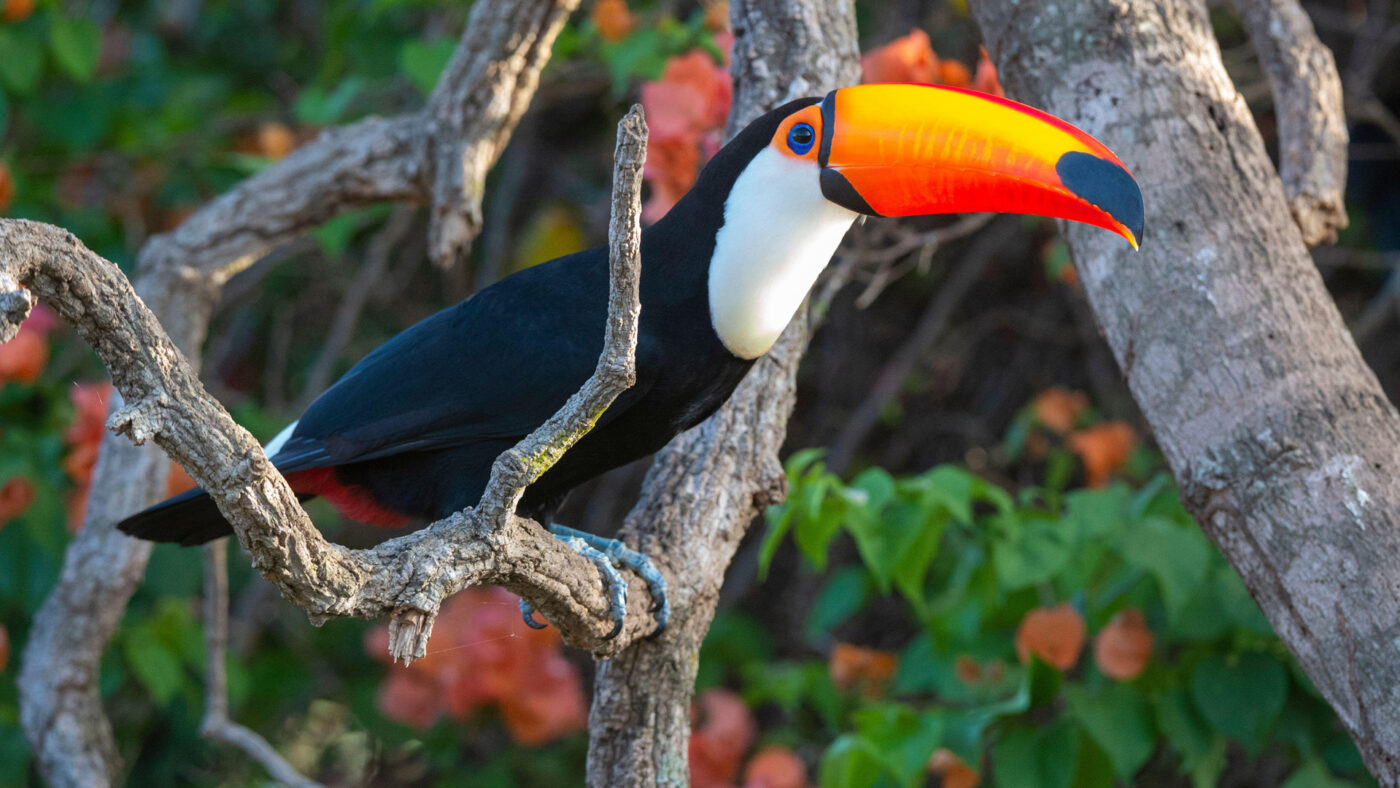Iguaçu National Park: Home of the Toco Toucans

Iguaçu National Park, located in the Paraná State of Brazil, is a UNESCO World Heritage site celebrated for its breathtaking waterfalls and diverse wildlife. Among the park’s many inhabitants, the toco toucan stands out as one of the most iconic and colorful species.
The Toco Toucan
The toco toucan, the largest of all toucan species, is easily recognizable by its vibrant orange beak, which can be as long as its body. Toco toucans are social birds, often seen in pairs or small flocks, and their loud calls can be heard echoing through the forest.
The Toco Toucan’s Adaptations
The toco toucan’s large beak is not just for show; it plays a crucial role in their survival. The beak helps them reach fruits on branches that are too small to support their weight, and it also aids in thermoregulation by adjusting blood flow to release or conserve heat. Additionally, their bright coloration provides camouflage among the vibrant fruits and flowers of the rainforest, helping them avoid predators.
Biodiversity of Iguaçu National Park
Iguaçu National Park spans over 1,700 square kilometers and is part of the larger Atlantic Forest, one of the most endangered rainforests in the world. The park is home to over 400 species of birds, including the toco toucan, as well as numerous mammals, reptiles, and insects. Visitors might also encounter jaguars, capuchin monkeys, and the elusive harpy eagle.
Conservation Efforts
Iguaçu National Park is not only a tourist attraction but also a critical area for conservation. Efforts are ongoing to protect the park’s unique ecosystems and the diverse species that inhabit them. These efforts ensure that future generations can continue to enjoy the natural beauty and wildlife of this remarkable region.
Conclusion
Iguaçu National Park is a haven for wildlife enthusiasts and nature lovers. The presence of the toco toucan adds to the park’s allure, making it a must-visit destination for anyone interested in experiencing the wonders of the natural world.
